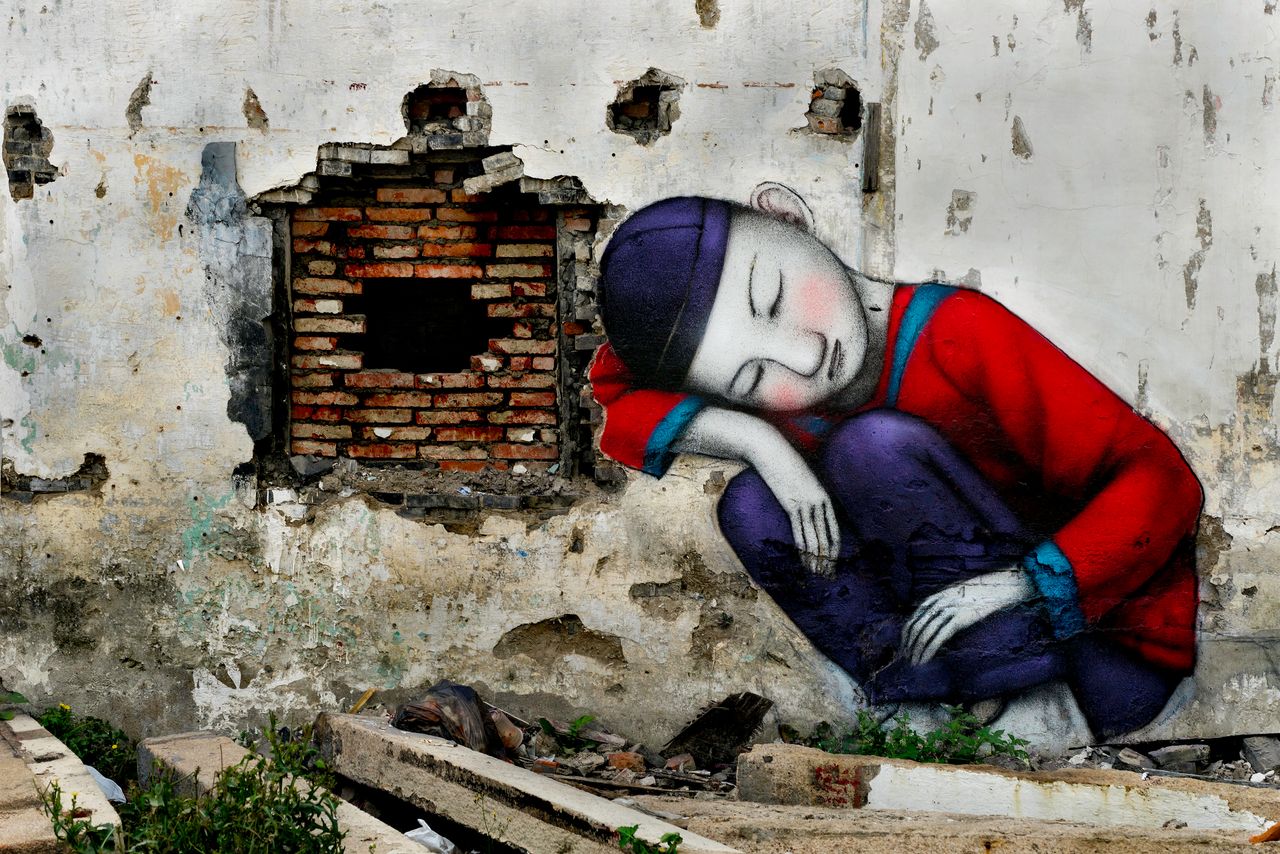Shanghai-based British photographer Graham Fink considers demolition sites to be places where magic happens. He believes the rubble is where the past meets the future, and where China's graffiti artists can let their creativity bloom.
Fink has traveled around Shanghai since July 2011 to photograph buildings that were torn down to make way for modern, functional structures like office buildings and skyscrapers. His "Ballads of Shanghai" photo project is currently on display at the Riflemaker Gallery in London, in an exhibit that will run until Saturday.
Shanghai is one of the world's largest financial hubs and home to over 24 million residents, but it started with humble beginnings. Located on China's east coast, it was once a small fishing village. The words "shanghai" literally mean "on the water" in Chinese.
The city became an international port to foreign traders as part of the 1842 Treaty of Nanjing between China and Britain. Foreign powers, including France, Britain and America, began flooding into Shanghai. They took control over "concessions," or various parts of the city, to which they brought Western laws, art, architecture and culture. This transformed Shanghai into an international city with the nickname "Paris of the East."
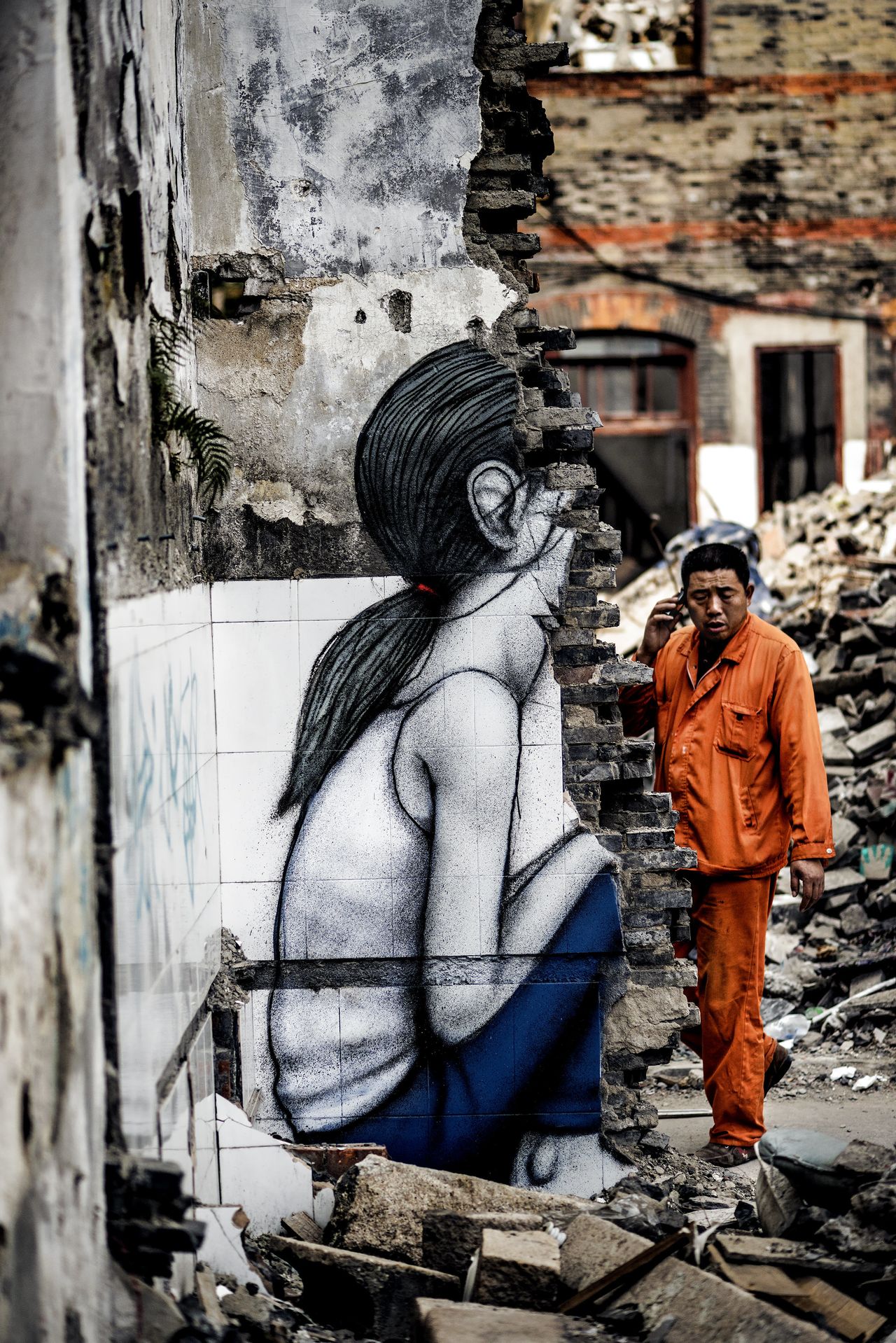
But after Mao Zedong's Communist Party took over China in 1949, the government turned Shanghai into a chiefly industrial zone, and many of the city's foreigners left. What used to be an exciting international metropolis became culturally insular to the outside world.
Life under Mao's communism stifled Chinese creativity, Fink said. Only with the country's gradual reopening to the West through social media and travel have Chinese people begun reawakening their artistic natures, as can be demonstrated by the various graffiti sprinkled around the city, the photographer added.
Why did you feel it was important to document Shanghai's urbanization?
There's a lot of building going on in Shanghai. They're knocking down houses and building office blocks, super structures, skyscrapers, etc. I see these demolition sites as "exchange sites," where they're exchanging the past for the future.
To a lot of Chinese people, the rubble and destruction may come off as a negative thing, but I see a lot of beauty in it. Ever since I was a kid, I feel very happy when I'm amongst rubble, things that have been torn down and derelict buildings and rubbish dumps.
“I call Shanghai a Darwinian metropolis. It just keeps evolving, keeps evolving, keeps evolving.”
The sites are constantly changing, constantly evolving. I call Shanghai a Darwinian metropolis. It just keeps evolving, keeps evolving, keeps evolving. Sometimes, when I go back to a site I visited weeks before, graffiti artists have moved in. A week later, the government has painted over the graffiti with a gray roller. Then a few weeks later, more graffiti will appear; then a few weeks later, they've started pulling down the building and constructing a new one.
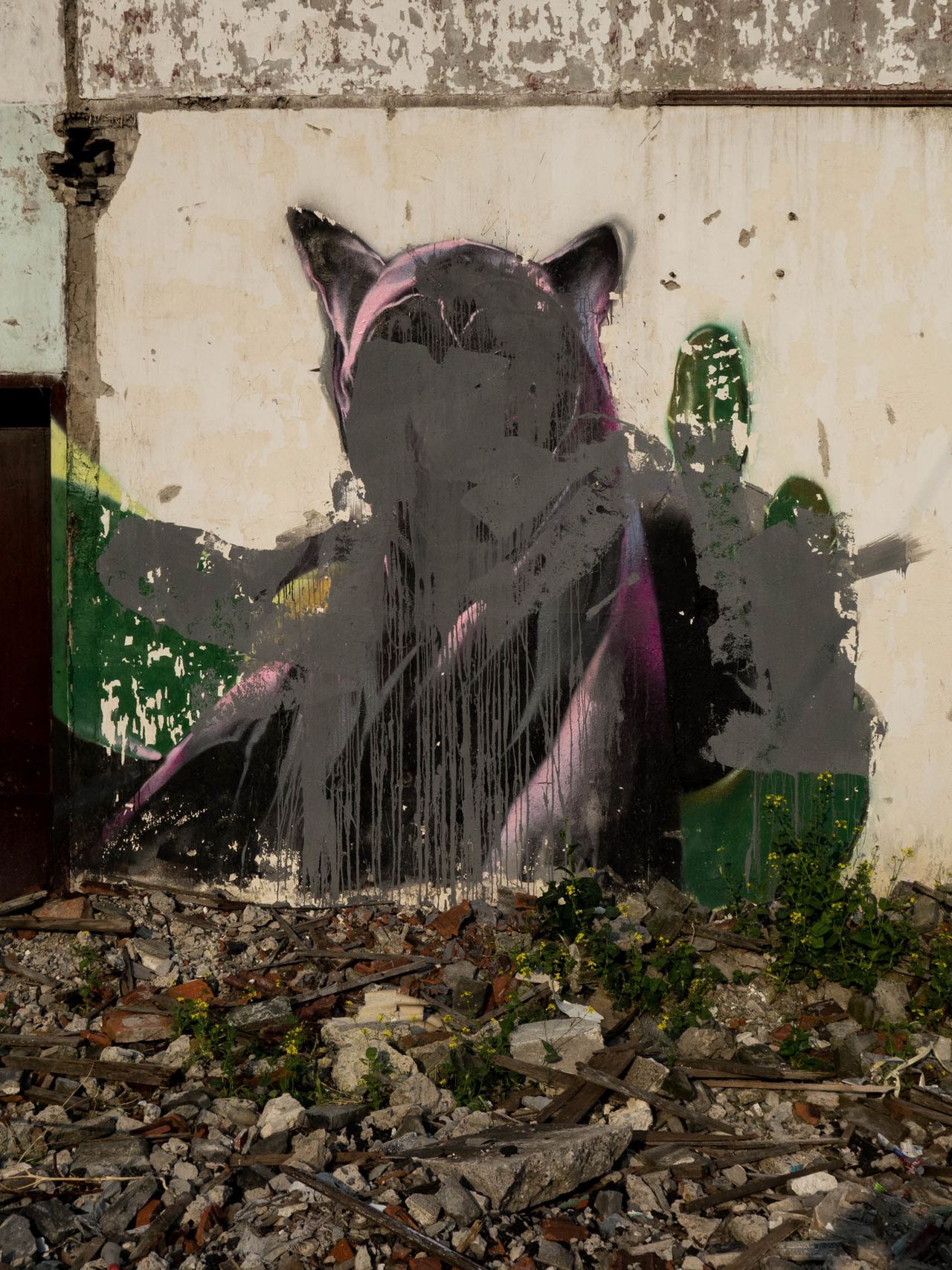
What has the photo project taught you about China's changing attitudes toward art, architecture and space?
I've lived in Shanghai for four and a half years, and I've never seen progress happen so fast anywhere else. There's a real can-do attitude in China. After the Cultural Revolution, a lot of the creativity was buried, and today, many Chinese artists are now looking into their roots to find their real DNA, find out what they really stand for.
There's a big desire to learn and a lot of Chinese want to do great work. They look and they listen. There is a tremendous willingness. I find Chinese people very humble.
“I've never seen progress happen so fast anywhere else I've been. There's a real can-do attitude in China.”
What drew you to photographing abandoned places, where people mostly appear as the subjects of the graffiti art painted on demolished walls?
It's kind of like discovering things. A lot of the buildings being constructed in Shanghai now are great structures with glass and steel, and they're all very functional. But to me, they're not particularly interesting. I've always liked stuff that is a bit more rough around the edges, that has a sort of grit behind behind the glamor.
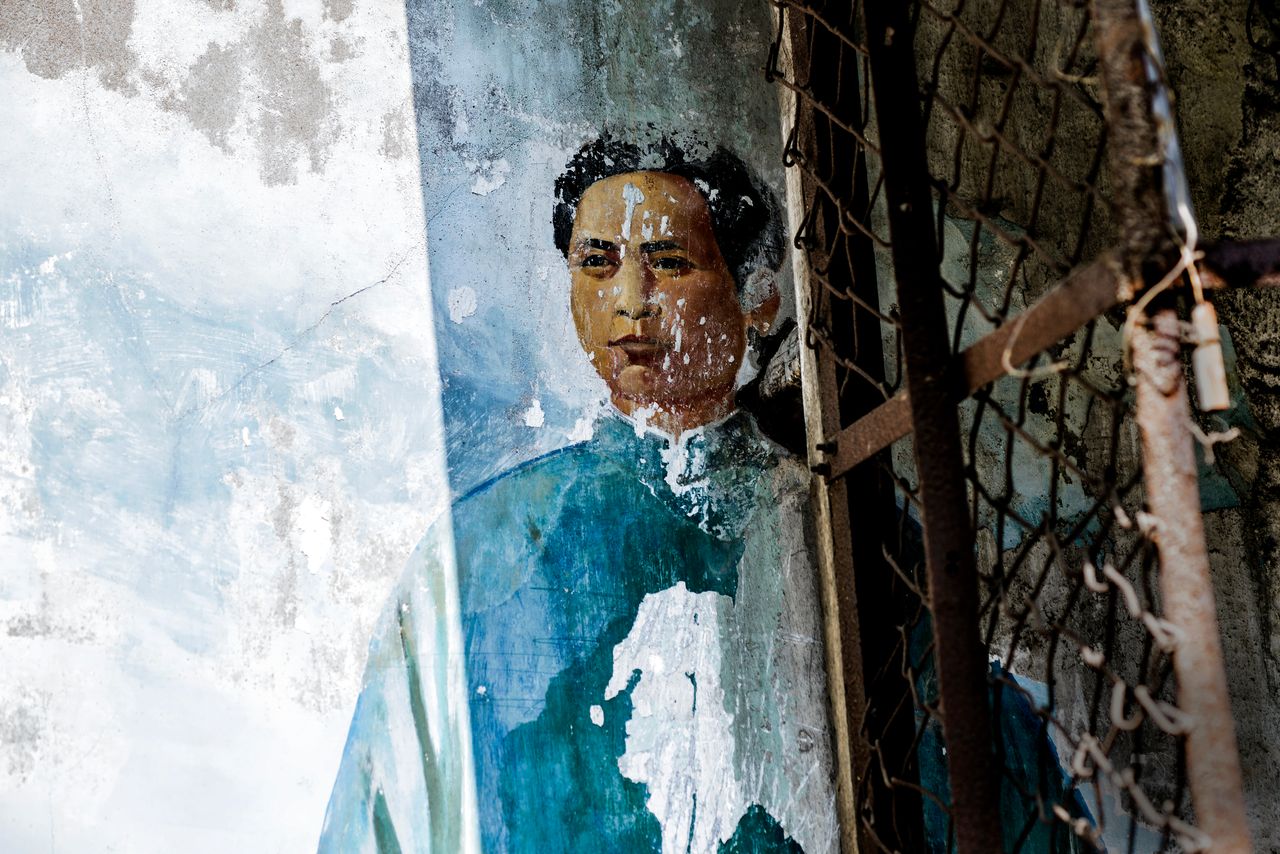
There's this picture of Mao Zedong in the wall that's flaking off. When someone painted that image, it would have been all perfect, but I like the idea that it's a little destroyed, it's a bit more decayed.
The sun came out right while I was shooting that picture, so you've got three parts to that picture. On the right-hand side, you have a cage, which could represent the Cultural Revolution and creativity being caged. On the left-hand side, you've got a ray of sunshine, which is like the future.
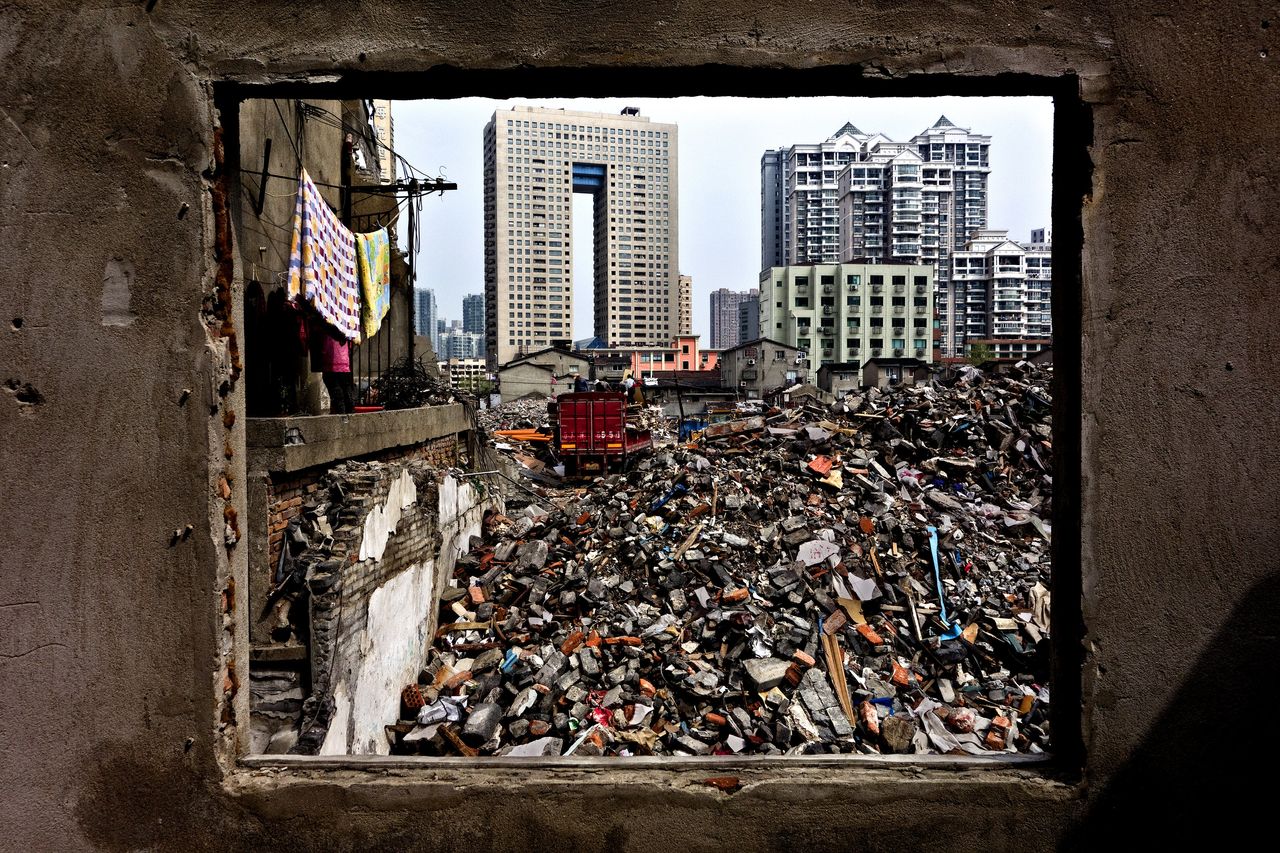
Is there a photo that is particularly poignant to you?
There's one where there's a knocked-through window, and behind you see all of the rubble and destruction of what has been knocked down. (The photograph, above, is named "You've Been Framed.") On the left-hand side, through the window frame, you can see, if you look really carefully, a woman in a pink jacket putting up her washing.
It's almost as if she's clinging on. Everything around her is being knocked down, people have moved out, but she is a fighter. She's determined, she's got to stay there, she's getting on with her life. She must be affected by this kind of stuff, but she's a fighter. There's something I find very beautiful about that.
It's like seeing a plant that grows through a piece of concrete. A plant is a very delicate thing, but strong enough to grow through concrete, and I think it's real determination with these people -- they're going to fight.
This interview has been edited and condensed for clarity.
See more of Fink's photography:
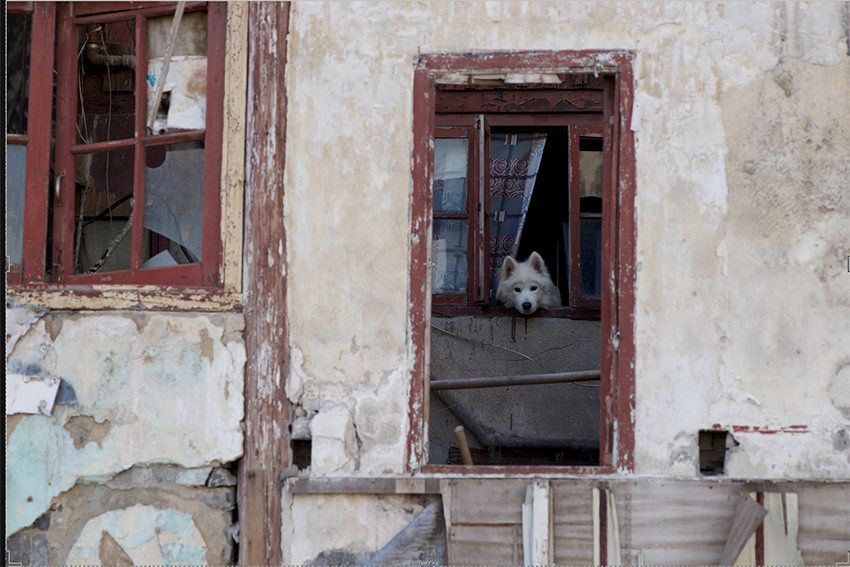
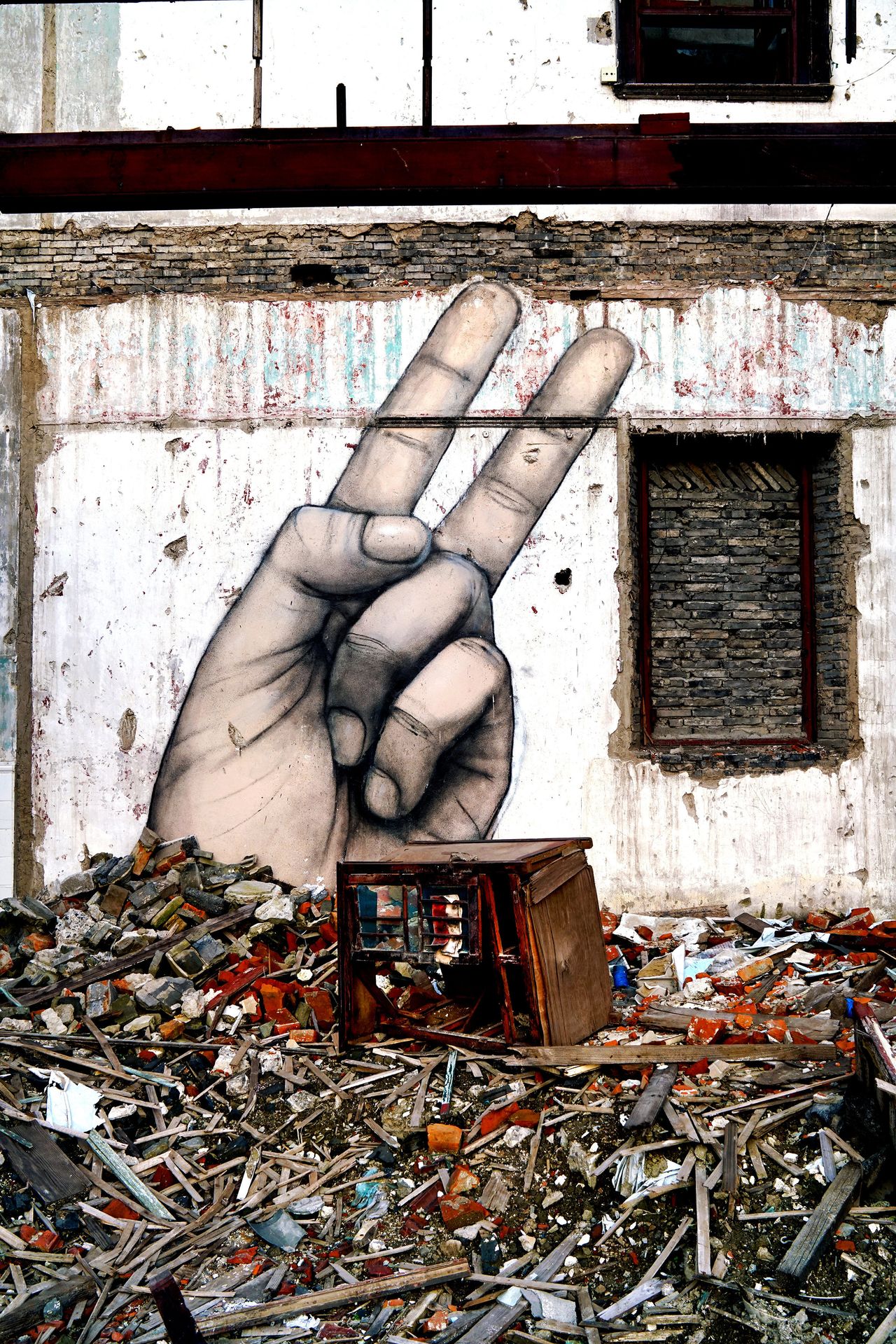


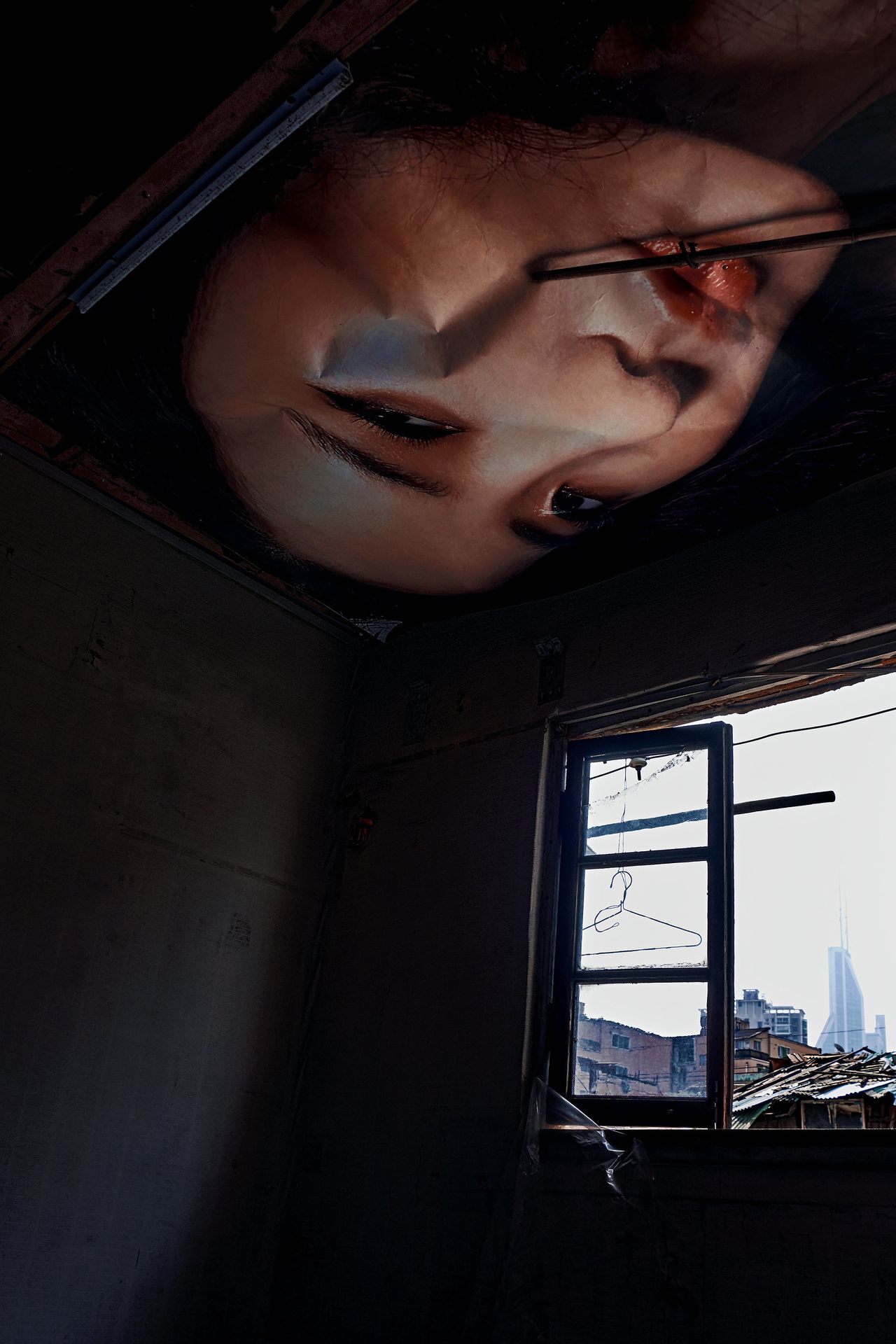
Also on HuffPost:
